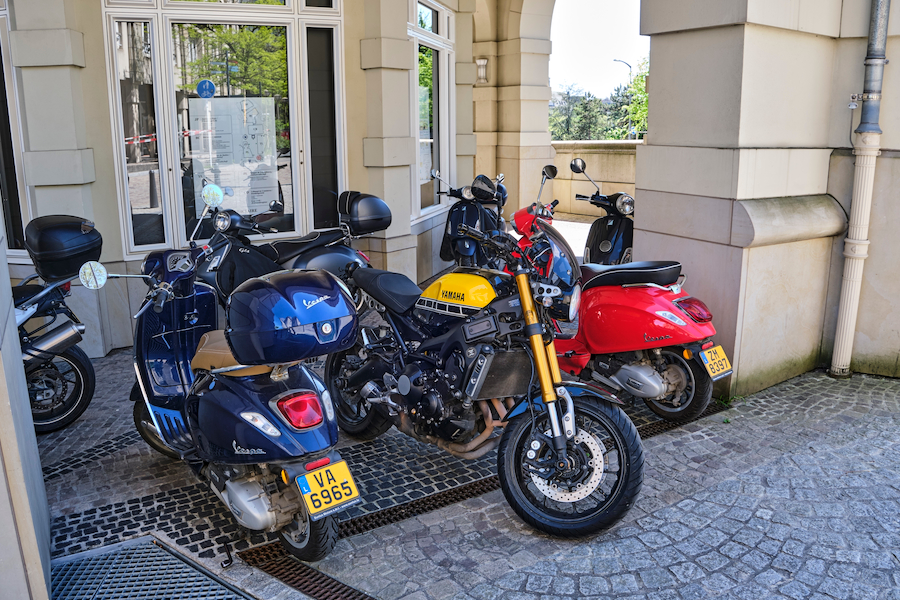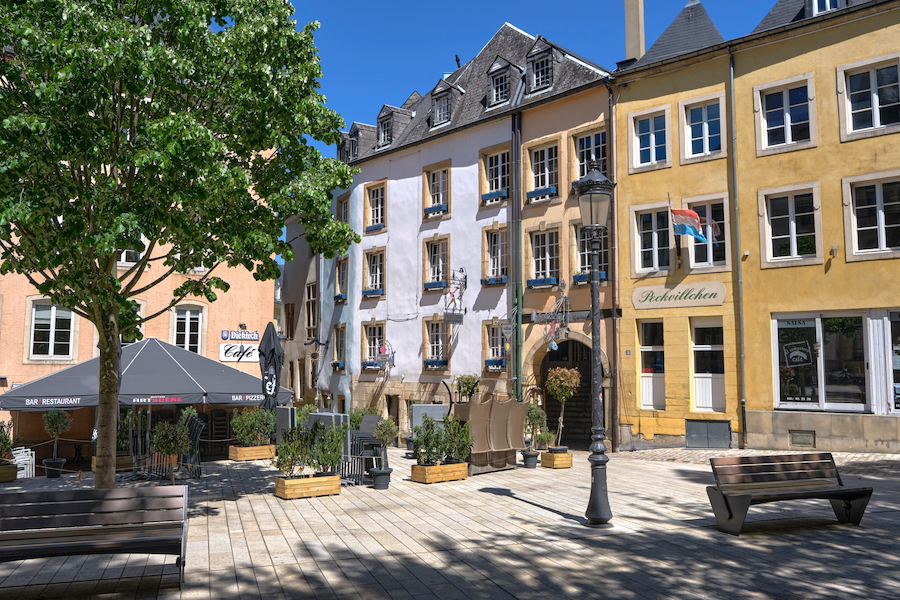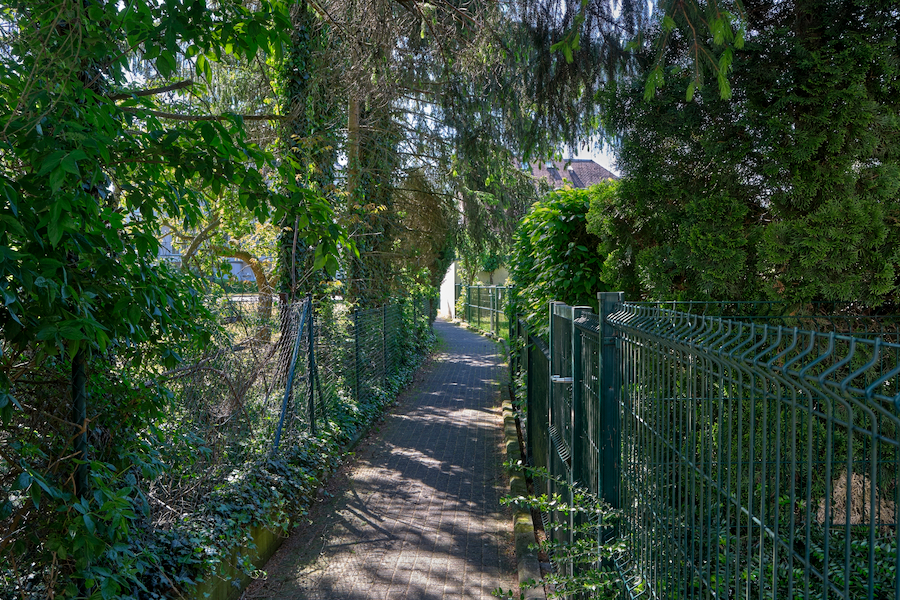Mobile Flagship Phone Cameras 2021 H1 Review: Megapixels & Telephotos
by Andrei Frumusanu on June 21, 2021 9:30 AM ESTDaylight: Main Camera HDR
We talked a lot about the optics and the different auxiliary sensors on the various phones, but kept the comments limited in regards to the main sensor as well as the general image processing characteristics of the various phones, so let’s go dive in a little more depth in that regard. In general, most of the phones’ main camera sensors should be quite competent nowadays as it’s the one module that usually doesn’t get to suffer from design compromises. Nevertheless, there are clearly some phones which offer quite superior hardware, such as the Mi 11 Ultra’s relatively giant 1/1.12” sensor – with the compromise here coming in the device’s huge camera bump instead.
Image processing is also extremely important even on such large sensors; while some phones have larger pixels, it’s still nowhere near large enough for the sensors to have a sufficient pixel full well capacity to enable the natural dynamic range information extraction in well lit scenarios while still maintaining detailed highlights as well as shadows. Most sensors still only have 10-bit ADCs and we’re only now seeing some newer 12-bit models, while almost all dedicated cameras out there 14-bit is the standard and new sensor generations in the coming years now feature 16-bit depth. The solution to this is to use multi-frame HDR processing, where the phone cameras will capture multiple successive images and merge them together to get to a higher dynamic range image. This year, we’ve seen the introduction of staggered HDR sensors which help out enabling this feature in a faster manner with less movement ghosting, the HM3 sensor on the S21 Ultra or the GN2 on the Mi 11 Ultra feature this new advancement.

[ X-T30 ( ) ]
[ S21U(S) ] [ S21U(E) ] [ Mi 11 Ultra ] [ Axon 30 Ultra ]
[ OnePlus 9 Pro ] [ Mi 11 ] [ S21(E) ] [ iPhone 12 Pro ] [ Pixel 5 ]
Starting off with this bike scene, it’s pretty obvious what the intended subject is meant to be, however the metering of most smartphones will still want to balance out the extremely bright highlight in the background sky, which in turn means the HDR processing will have a harder time in trying to recover shadows in the foreground even though it’s not a dark scene at all, which is in general why the look on the phones is quite different than what I captured on the X-T30 – the colour temperature was also quite off on all the phones.
The S21 Ultras pictures is a good example of the metering, the Exynos preferred to go brighter with the HDR and retain a bit more detail in the background highlight, while the Snapdragon preferred to go for more detailed shadows on the main subject. In terms of details, it seems this scene went the opposite of what we saw until now, and it’s the Snapdragon which employs a visible structure enhancement throughout the scene, giving it a bit more of an artificial look. The regular S21 doesn’t look very different to the S21 Ultra at all – if anything I prefer the S21’s slightly better colours, and I do see some improved shadow detail.
The Mi 11 Ultra excels in dynamic range here, showcasing much better shadows whilst also having more highlights maintained in the background compared to the S21 Ultra. The detail structure is also more natural without any heavy processing. The regular Mi 11 on the other hand looks completely washed out in comparison, with very little detail retention, as if the phone was primarily capturing using the ultra-wide and sensor fusing some details from the wide-angle – I’m a bit perplexed by the result.
While the OnePlus 9 Pro image appears eye-catching, it’s not a technically great result as the shadows are forced towards black. I actually remember when OnePlus introduced this image processing with a firmware update on the OnePlus 7 Pro following the devices’ releases, based on user feedback, with the company trying to mimic the “contrasty” Pixel look. That Pixel look was actually a negative side-effect of the HDR processing incapable of dealing with shadows, which was fixed and resolved with the latest HDR+ algorithm on the Pixel 5. OnePlus devices today are still left with what I consider a self-induced handicap.
The Axon 30 Ultra is a bit flat in the foreground highlights, producing a generally dark picture. The iPhone is also having surprising trouble with the metering here, as the Pixel 5 does quite a bit better.

[ X-T30 ( ) ]
[ S21U(S) ] [ S21U(E) ] [ Mi 11 Ultra ]
[ Axon 30 Ultra ] [ OnePlus 9 Pro ] [ Mi 11 ]
[ S21(E) ] [ iPhone 12 Pro ] [ Pixel 5 ]
In this landscape, the Mi 11 Ultra and the Pixel 5 did best in terms of colours. The S21’s did well in the overall representative brightness of the scene, however I feel like they didn’t have the dynamic range in the highlights to give out natural graduations, and thus it feels a bit flat. The Axon 30 Ultra feels it like has over-sharpening going on, and also while the overall brightness is correct it struggles to graduate the highlights correctly.
The over-processing on the OnePlus 9 Pro is quite horrible and makes a huge mess of the colour tones as well as details of the scene.

[ X-T30 ( ) ]
[ S21U(S) ] [ S21U(E) ][ Mi 11 Ultra ]
[ Axon 30 Ultra ] [ OnePlus 9 Pro ] [ Mi 11 ]
[ S21(E) ] [ iPhone 12 Pro ] [ Pixel 5 ]
In general colour tones and balance, the Pixel 5 has I think the best results, closest to being accurate, generally followed by the iPhone 12 Pro. The iPhone is generally the only one being able properly pick up the highlight textures, while the Pixel 5 is the only one being able to pick up extreme shadow detail.
The S21’s again had very good overall scene exposure, however lack detail retention in the highlights, probably going too far beyond what the sensors were capable. The Xiaomi phones are both generally good but their HDR processing really isn’t as strong in recovering information here. The Axon 30 Ultra does well except for what I would consider a bit too warm colour. The OnePlus 9 Pro struggles with highlight textures, and again has this extreme digital look due to structure enhancing.

[ X-T30 ( ) ]
[ S21U(S) ] [ S21U(E) ] [ Mi 11 Ultra ]
[ Axon 30 Ultra ] [ OnePlus 9 Pro ] [ Mi 11 ]
[ S21(E) ] [ iPhone 12 Pro ] [ Pixel 5 ]
This was also more an artificial scene to see what the HDR algorithms would do on the various phones. The Pixel 5 is again generally the best in terms of correctly maintaining colours in the extremes. The usual problem is that when you have highlights nearing dynamic range saturation and clipping, they should be desaturating their colours towards white, which some phones camera algorithms just don’t do as they attempt to recover details. This ends up in a very unnatural looking images where colours can go haywire.
Overall Main Camera HDR Processing & Natural Dynamic Range
In general, when it comes to the algorithms that are able to behave the best in terms of demanding high dynamic range scenarios, Google’s Pixel 5 and Apple’s iPhone 12 Pro appear to behave the best in terms of handling the tone curves correctly. The Samsung phones also have good HDR but sometimes don’t handle their highlights as well, going beyond what their sensors are capable of handling.
Xiaomi’s HDR processing doesn’t appear to be the strongest in recovering dynamic range, however the giant Mi 11 Ultra sensor still does well in terms of raw natural dynamic range, and also natural detail retention. OnePlus’s 9 Pro I found to be lacking in colour accuracy of highlights a lot, but most importantly I found the excessive sharpening and structure enhancement to be very detrimental to the images. The Axon 30 Ultra had quite good HDR in terms of returning the dynamic range, but also lots of times struggled with getting the colours tone mapped correctly.
I’d be curious to see what Google and Apple would be capable of given an actually technically competent image sensor, as most of the other vendors are really hit & miss in regards to their image processing in demanding lighting conditions.










60 Comments
View All Comments
Jon Tseng - Monday, June 21, 2021 - link
Assume this is the iPhone Pro, not the Pro Max?If so might be worth looking at the Pro Max. Presumably the slightly upgraded camera with the funky Cirrus closed loop controller has some benefit?
Andrei Frumusanu - Monday, June 21, 2021 - link
I don't have that unit.damianrobertjones - Monday, June 21, 2021 - link
Such a shame that Huawei cannot be included. If it wasn't for them, we might still be stuck with rubbish phone cams.michael2k - Monday, June 21, 2021 - link
Apple had a 2 camera system in the 7 Plus in 2016, just like the Huawei P9.So it seems a stretch to credit the Huawei, unless you think in the 5 months between the P9 and the 7 Plus Apple revamped their camera from one to two because of Huawei? That seems improbable since Apple designed iOS 10.1's portrait mode around a two camera system.
quiksilvr - Tuesday, June 22, 2021 - link
Technically the P9 was a dual camera system but their second camera lacked a color filter to improve low light and merge the cameras together. the LG G5 was the first real dual camera system with one being a wide-angle camera. I honestly would argue that LG started it but Huawei took it to the next level.ottonis - Wednesday, June 23, 2021 - link
"It seems a stretch to credit Huawei" - really? The Night modes were initially brought by Huawei - all the other companies followed suit.There is no denying that P10-P30 have been extremely igniting the advancemend of phone-camera technology and if it weren't for the sanctions they might still be relevant in that market segment.
Right now, it seems that Xiaomi is leading the pack with the most advanced combination of camera hardware+software, but we will see for how long they will be willing to invest into further optimizing the camera experience.
Sony seems to be back in the game with their upcoming Xperia 1 iii but there has been some disappointment among the camera-enthusiasts that Sony of all people have not embraced their latest and greatest sensor technology (e.g. their newest and purpotedly spectacular 1" IMX sensor). My guess is that Sony will take another year or two in order to fully catch up with the best in business (w/r to phone camera quality).
In my opinion, the future of phonecamera-technology is not in multisensor/multi-module options but in one bigger sensor (anything around 1", give or take) and a variable optics before the sensor. Just imagine being able to change from e.g. 16mm to 35mm and maybe 50 mm while always having the same great large sensor.
s.yu - Wednesday, June 23, 2021 - link
No, the name doesn't matter. Stacking started with Google's HDR+. Night mode is just stacking with slightly different parameters. And P20 which debuted the so-called night mode had such waxy results that most of the time it was better to just use auto.s.yu - Wednesday, June 23, 2021 - link
Here, see how everything looks like crayon? This is actually one of the better samples, some samples from other sites look even worse.https://images.anandtech.com/galleries/6436/P20_IM...
This is the Pixel from back then, with HDR+, which retains far more natural texture:
https://images.anandtech.com/galleries/6436/P2XL_I...
sonny73n - Wednesday, June 23, 2021 - link
Phone camera sucks and iPhone camera is the worst. Take a picture of your wife with your iPhone and ask her how she looks in it.s.yu - Wednesday, June 23, 2021 - link
You could use the IQ4 150MP paired with the Apo-Digitar 120/5.6 to take a photo of you wife at f/11. I don't think she's gonna be happy.Flattering != high quality.